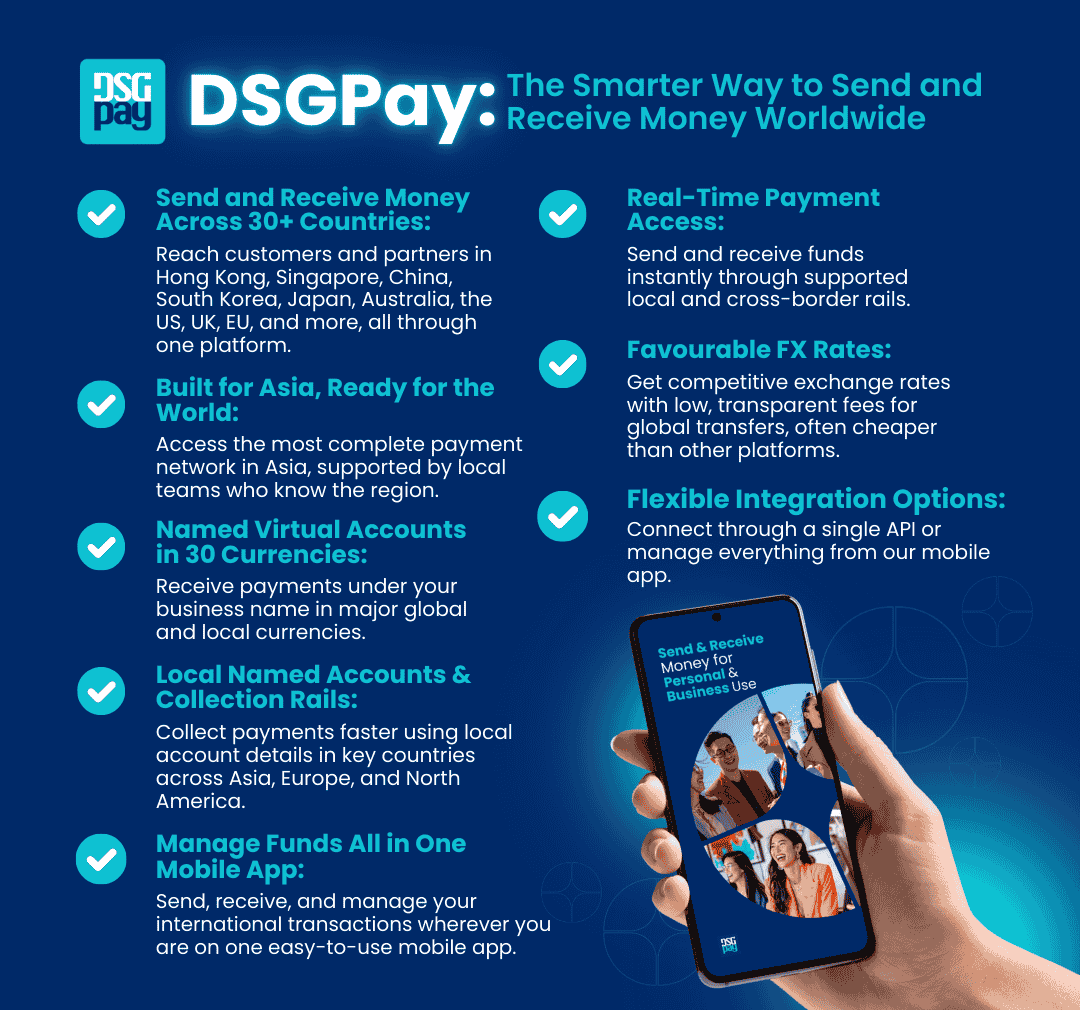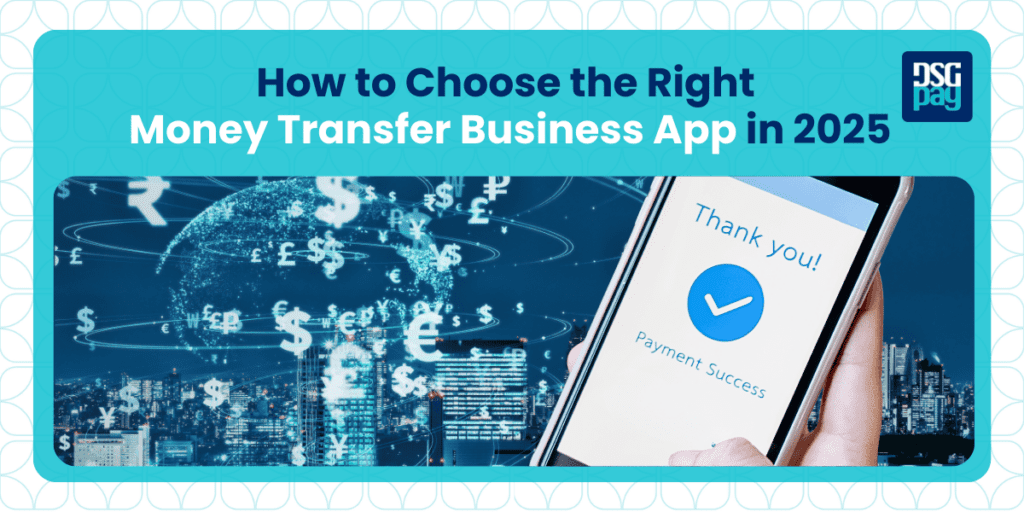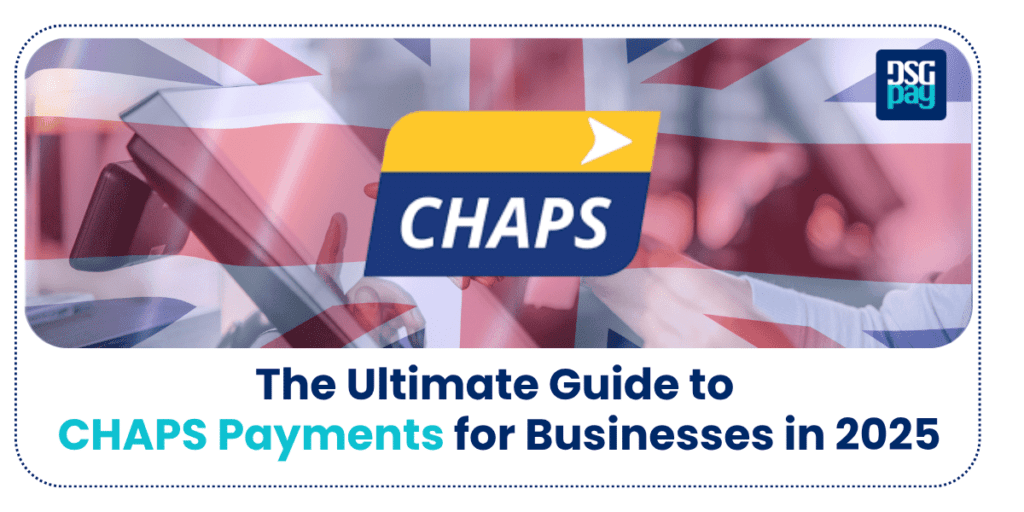In 2024, McKinsey reported that 23% of UK SMEs and 30% of micro businesses use fintechs and other nonbank providers for cross-border transactions, with the number expected to increase in 2025.
Choosing the right money transfer business app can significantly influence the success of your company.
This guide breaks down how to make the right choice and provides tips to help you succeed in your business.
Table of Contents
Key Takeaways
- A money transfer business app is a platform that helps businesses manage funds locally and internationally.
- These applications can be divided into fintech payment apps, international MTO platforms, FX-focused apps, or all-in-one business banking apps.
- To make the best choice, compare providers’ fees, user limits, regulations, integrations, and payout options.
What is a Money Transfer Business App
A money transfer business app is a digital platform that helps businesses send and receive funds locally and internationally. Unlike consumer-focused apps, these platforms are built with features suitable for businesses, such as multiple users, audit trails, accounting integration, compliance management, and scalable payment volumes.
Why Choosing the Right Money Transfer Business App Matters
The globalisation of business means companies are transferring money more frequently, across more borders, and in more currencies than before.
A poorly chosen payment app can slow down a business’s operations and create compliance issues. It will also increase transfer costs due to hidden margins in FX spreads and bank fees.
Businesses today operate across continents, work with international suppliers, hire remote teams, and accept global payments. This makes speed, cost efficiency, regulatory security, and transparency more critical than ever.
The right app should do more than “send money”; it should grow your business, cut expenses, and streamline financial operations across multiple markets.
Types of Money Transfer Business Apps
These applications can be divided into the following categories:
1. FinTech Payment Apps
These are modern, app-based payment solutions built primarily for speed, convenience, and cross-platform flexibility. They focus on helping businesses send and receive money digitally without needing a full banking setup. Some of these apps also provide virtual accounts, which businesses can leverage to make global collections.
Popular examples are PayPal Business, Stripe, and Square Payments.
How It Works:
- You fund a fintech payment app through a bank account or a wallet app.
- Enter the recipient’s details and initiate a balance-to-balance payment.
- Funds typically settle within minutes to a few hours.
Pros:
- Offers fast transaction processing.
- Requires minimum maintenance or strict rule adherence.
- Offers easy integration setup with apps like Shopify, Wix, and accounting tools.
- Good for small-volume or mid-volume transfers.
- Excellent UI/UX and mobile accessibility.
Cons:
- Expensive for high-volume or international transfers.
- Distinct functionality capabilities between providers.
Best For: Businesses that prioritise speed, simple user experience, and digital-first financial tools.
2. International Money Transfer Operators (MTOs)
These are traditional but digitally enabled companies that specialise purely in cross-border transfers. Their primary advantage is cost-effective international payouts and good coverage of countries and currencies.
Popular examples are Western Union Business Solutions, MoneyGram for Business, Remitly Business, and WorldRemit Business.
How It Works:
- You fund the transfer using a bank, card, or business wallet.
- The MTO routes the transaction through its global agent network or banking partners.
- The transfer moves through local rails or correspondent networks based on the destination country.
Pros:
- Reliable for long-distance transfers.
- Supports large volumes and exotic currencies.
- Trusted regulatory compliance.
- Predictable delivery times.
Cons:
- Slower settlement time compared to fintech apps.
- Fees vary widely by country corridor.
- Not the best option for frequent daily transfers.
Best For: Businesses dealing with international suppliers, contractors, or employees across multiple regions.
3. FX-Focused Transfer Apps
These apps specialise in currency exchange and cross-border optimisation. Their core advantage is offering cheaper FX rates and better transparency for multi-currency businesses.
Popular examples are Wise Business, OFX Business, Revolut Business, Currencies Direct, and AirWallex.
How It Works:
- You fund your account with your local currency.
- Fill in the details of the recipient’s account.
- Convert your local currency to the recipient’s currency before sending the funds.
- The recipient receives the money in his FX-focused transfer app or his local bank account.
Pros:
- Uses mid-market rates for currency conversion.
- Multi-currency accounts for collections.
- Good for recurring or high-volume transfers.
- Lower overall transfer costs.
Cons:
- Some providers have geographic limitations.
- No traditional banking features, such as loans or overdrafts.
- Settlement timing may depend on the currency route.
Best For: Businesses managing multi-currency cash flow, invoicing clients globally, or paying international teams.
4. All-in-One Business Banking Apps
These apps combine banking, transfers, cards, accounts payable, payroll tools, and currency management into one digital platform. They are built to replace or supplement traditional business bank accounts.
These apps operate as modern “business banks” without branches. They give businesses a central hub for payments, collections, cards, and treasury tools.
Popular examples are Monzo Business, Starling Bank Business, N26 Business, and Qonto.
How It Works:
- Open a business account and receive local banking details.
- Send and receive payments using supported rails such as SWIFT, SEPA, or domestic clearing systems.
- Manage cash flow, payouts, and collections directly from one dashboard.
Pros:
- Has comprehensive business financial tools.
- Uses lower fees than traditional banks.
- They have built-in multi-user permissions and approval workflows.
- Integrates with accounting tools.
Cons:
- Not all offer international transfers.
- Some restrict access by country.
- Must pass business KYC/KYB checks.
Best For: Growing businesses needing a unified financial operations platform.
Besides the popular examples here, every money transfer business app fits under at least one of these categories.

Comparing the Types of Money Transfer Business Apps
To easily spot the differences between the categories of money transfer business apps, let’s place them side by side.
| Type of App | Examples | Strengths | Limitations | Best For |
|---|---|---|---|---|
| FinTech Payment Apps | PayPal Business, Stripe Send, Square Payments | – Fast setup – Digital-first – Easy integration – Ideal for everyday payments | – Higher fees for international transfers – Transaction volume caps may apply | SMEs needing simple, fast payment options |
| International Money Transfer Operators (MTOs) | WU Business, MoneyGram Business, Remitly Business, WorldRemit Business | – Wide global coverage – Strong compliance – Reliable delivery | – Slower compared to newer digital methods – Fees vary by corridor | Businesses paying suppliers or staff abroad |
| FX-Focused Apps | Wise Business, OFX Business, Revolut Business, Currencies Direct, Airwallex | – Best FX rates – Multi-currency support – Transparent fees | – Limited banking features – Restricted availability by region | Global companies managing currency exposure |
| All-in-One Business Banking Apps | Monzo Business, Starling Bank, N26 Business, Qonto | – Full banking tools – Low fees – Card and virtual account options | – Strict KYC/KCB requirements – May lack full global support | Businesses seeking a complete financial hub |
Remember, the best money transfer business app for your organisation depends on your business needs. Each method has its strengths and limitations, so it’s important to understand them before choosing a provider.
How to Choose a Money Transfer Business App for Your Business
Here are the best ways to choose a suitable transfer app for your business:
- Step 1: Determine your Transfer Volume, Frequency & Corridors: Your chosen app should be able to handle the size, frequency, and method of your payments.
- Step 2: Compare Fee Structures & FX Markups: Don’t just compare “transfer fees”. Compare FX spreads, hidden charges, local rail fees, and conversion rates.
- Step 3: Test the App’s User Experience & Speed: The business app must make automation simple. Test how long it takes to schedule a transfer, approve payments, and load funds.
- Step 4: Check Local Payment Rails & Settlement Speeds: Make sure the app supports real-time systems in your primary corridors. Using fast local payment rails massively reduces your ongoing expenses.
- Step 5: Review Security, Regulation & Compliance Protections: Check the app’s licences, compliance policies, and fraud detection features. This is relevant when avoiding frozen transfers or compliance-related delays.
- Step 6: Assess Customer Reviews & Trust Scores: Search for independent reviews and business testimonials. Platforms like Trustpilot, G2, and Reddit communities reveal how the app performs under real business use.
- Step 7: Request a Demo Mode or Free Trial: If you’ve been convinced by an app so far, request a demo mode. If they offer free trials, use them. A demo or free trial lets you test automation, approval flows, and international transfers before committing.
Final Thoughts
Choosing the right money transfer business app is less about money and more about efficiency. To make the right choice, check out the app’s functionalities, security measures, transfer restrictions, and more.
Ensure you’re majorly satisfied before making the final decision.
DSGPay: A Multi-Currency Money Transfer App for Global Businesses
For businesses looking for a reliable money transfer app that goes beyond simple sending and receiving, DSGPay offers a scalable payment infrastructure designed for cross-border operations.
With named virtual accounts, fast settlement, and support for 30+ currencies, DSGPay helps companies manage local and international payments efficiently.
Why Choose DSGPay:
- Named Virtual Accounts: Send or receive payments using a virtual account that carries your brand name. This also helps your business foster trust with its international clients.
- Multi-Currency Account Capabilities: Make transactions in USD, GBP, EUR, HKD, and 30 other currencies all from one dashboard.
- Favourable FX Spread: Convert between currencies at low and favourable rates before initiating your transaction.
- Faster Settlements: Leverage local and international real-time payment rails to settle transactions within minutes to an hour.
- Seamless API Integration: DSGPay uses a single-faced API system that offers easy integration settings.
- Transaction Tracking Capabilities: Monitor or track your transaction from beginning to completion using the platform’s user-friendly mobile app.
- Fully Licensed to Operate: DSGPay holds a financial licence from AUSTRAC, a money service operator licence from Hong Kong, and is cleared to operate in over 81 supported countries.
Whether you’re paying overseas suppliers or issuing refunds to customers in multiple markets, DSGPay makes it simple to move funds quickly and reliably.




